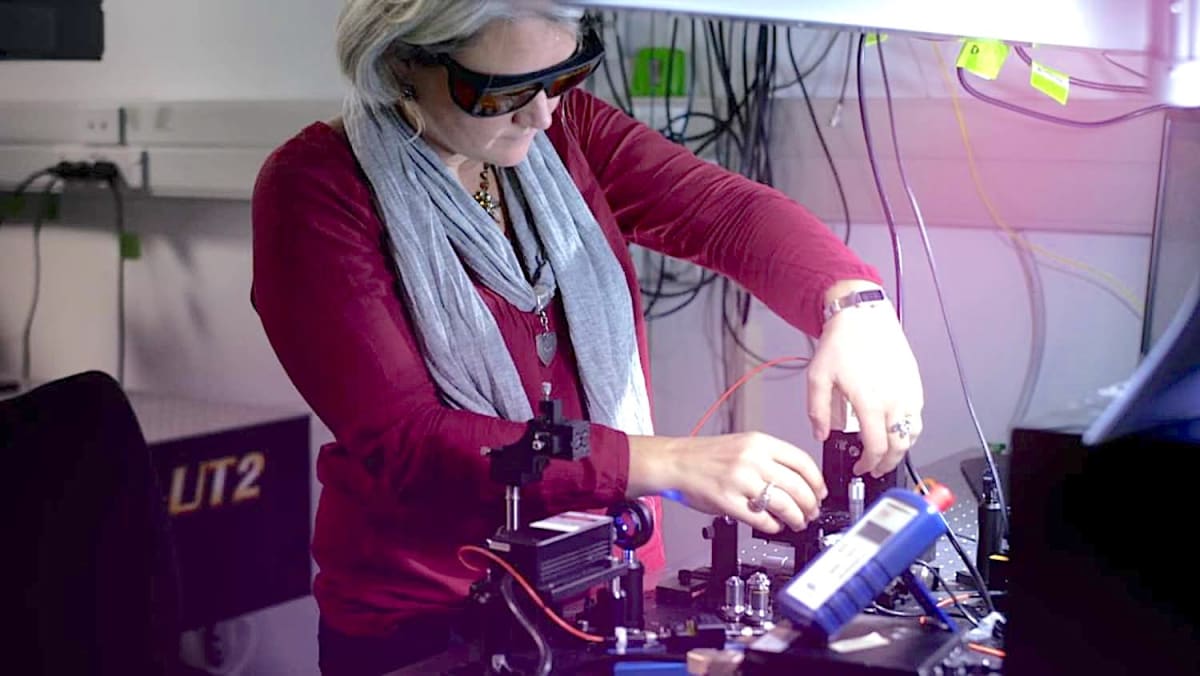
More money than ever is going to be pumped into science and who it goes to can make a difference
One of New Zealand’s top scientists feels gender quotas need to be introduced to level the playing field and create a more successful scientific industry.
Elevating the country’s science ecosystem is one of three focuses in the upcoming budget, with Prime Minister Chris Hipkins telling Newsroom that investment in research and development of new technologies had to improve to stay at the cutting edge.
More funding will obviously be well received, but how and to who money is distributed presents an opportunity to make a real difference to diversity.
READ MORE: * Applied science stigma holding back high-value economy * Govt’s new science spending must mend public/private rift * We really need to up our R&D game
University of Auckland professor and freshly minted director of the Dodd-Walls Centre for Photonic and Quantum Technologies Frédérique Vanholsbeeck believes science is being held back by a diversity problem.
“The way I see it is that to succeed in anything, you need to be good but you also need a bit of luck or help, right?
“The problem is for women and people of colour; we don't end up having that much luck because people tend to mentor people that look like them.”
True diversity, as always, brings fresh points of view and more robust decision-making, which she believes would greatly benefit New Zealand and its wider economy.
"Ten years ago, there was pretty much no one, so at least now there are some role models, and I think people who are 10 to 15 years younger than me have a few more people to look up to.” – Frédérique Vanholsbeeck
An example of the value of science to New Zealand is Vanholsbeeck’s specialist area of photonics, which was valued at $1.2 billion in 2020 – similar to wine or infant formula.
Vanholsbeeck is keen to see “luck” in science become an even playing field through greater introduction of gender or ethnic quotas.
She can see the obvious criticism of introducing quotas – that individuals could succeed not based on merit alone. “People tend to think that people have been put in a role just because they were a woman or Māori not because they were good.
“That's where we need to change the mindset. Of course they are good – it’s just they were given a chance [they might not otherwise get].”

Vanholsbeeck said it could be as simple as requiring universities to nominate a certain ratio of women or people of colour, effectively forcing them to look for talent.
Australia’s National Health and Medical Research Council has a requirement like this for mid-career and senior scientists, requiring half of all investigator grants to go to women and non-binary applicants.
Vanholsbeeck takes a slightly more moderate stance. “For example a funding agency could say each university can put forward 10 applications but at least five need to be for women.”
That might not result in those five applications being successful, it just makes a statement that to secure funding institutions must do a better job of identifying and growing talent.
“A 50-50 split is not necessary.”
Though more needs to be done to support diversity in science, Vanholsbeeck said for one reason or another there were quite a few female physics professors in New Zealand at the moment – something she sees as evidence of progress.
“That's very new. Ten years ago, there was pretty much no one, so at least now there are some role models, and I think people who are 10 to 15 years younger than me have a few more people to look up to.”







